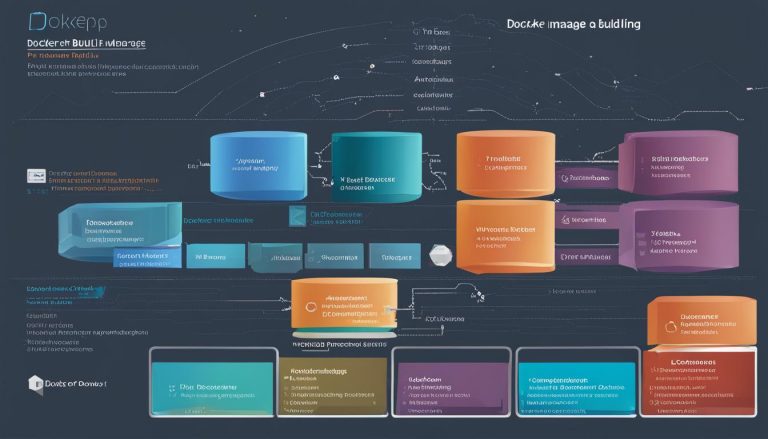Welcome to the first section of our article, where we dive into the fundamentals of cryptanalysis. In this section, I will explain what cryptanalysis is and provide a brief overview of its importance in the field of cybersecurity.
Cryptanalysis is the study and process of analyzing and decrypting ciphers, codes, and encrypted text without using the real key. It involves accessing a communication’s plain text content when you don’t have access to the decryption key. Cryptanalysis is the practice, science, or art of decrypting encrypted messages. It is used by hackers, governments, cybersecurity companies, and researchers to find vulnerabilities in encryption codes and systems.
Now, let’s delve deeper into the importance of cryptanalysis and its role in enhancing cybersecurity.
Key Takeaways:
- Cryptanalysis is the study and process of decrypting encrypted messages without the original key.
- It is essential in identifying weaknesses in encryption codes and systems.
- Cryptanalysis helps improve security measures and protect sensitive data.
- It assists intelligence agencies in deciphering encrypted messages for national security purposes.
- Cryptanalysis and cryptography are both crucial in the ongoing battle against cybercriminals.
Now that we have a solid understanding of what cryptanalysis is, let’s explore its importance in detail in the next section.
Importance of Cryptanalysis
Cryptanalysis plays a crucial role in the field of cybersecurity. By analyzing encrypted messages and deciphering encryption codes, cryptanalysts help identify vulnerabilities in cryptographic algorithms and systems. This information is then used to develop stronger encryption methods and enhance overall security measures.
One of the significant benefits of cryptanalysis is its ability to uncover weaknesses in encryption codes. Hackers and other malicious actors are constantly evolving their techniques, making it essential for cybersecurity professionals to stay one step ahead. By understanding the methods used by attackers, cryptanalysts can develop countermeasures to protect sensitive data from unauthorized access.
“Cryptanalysis allows us to assess the strength of encryption algorithms and identify potential weaknesses. It’s a crucial part of the ongoing battle between cybercriminals and those seeking to protect sensitive information.”
Furthermore, cryptanalysis is not limited to protecting data from external threats. Intelligence agencies also rely on cryptanalysis to decipher encrypted messages and gather valuable information for national security purposes. By decrypting these messages, intelligence agents can uncover hidden threats and prevent potential security breaches.
Cryptanalysis Importance Summary:
- Cryptanalysis helps identify vulnerabilities in encryption algorithms and systems
- It enables the development of stronger encryption methods
- Protects sensitive data from unauthorized access
- Assists intelligence agencies in gathering valuable information for national security purposes
| Cryptanalysis Benefits | Cryptanalysis Applications |
|---|---|
| Identifying weaknesses in encryption codes | Hackers and cybercriminals break into encrypted systems |
| Enhancing overall security measures | Protecting sensitive data from unauthorized access |
| Decrypting encrypted messages for intelligence purposes | Gathering valuable information for national security |
Cryptanalysis Techniques
In the field of cryptanalysis, there are several techniques used to break encryption codes and uncover the secrets hidden within. These techniques employ various approaches and strategies, each with its own unique advantages and limitations. Let’s explore some of the most common cryptanalysis techniques:
Ciphertext-Only Attacks
One of the simplest and most challenging techniques, ciphertext-only attacks involve analyzing only the encrypted message, without any knowledge of the plaintext or the encryption algorithm. In this approach, cryptanalysts use statistical analysis, frequency distribution, and pattern recognition to deduce information about the underlying encryption scheme.
Known Plaintext Attacks
In known plaintext attacks, cryptanalysts have access to both the plaintext and its corresponding ciphertext. By using this knowledge, they can analyze the relationship between the two and potentially uncover patterns or weaknesses in the encryption algorithm. This technique is particularly effective when the encryption algorithm mistakenly exposes sensitive information.
Differential Cryptanalysis Attacks
Differential cryptanalysis attacks involve analyzing pairs of plaintext and corresponding ciphertext to identify patterns and relationships in the encryption algorithm. By observing how small changes in the plaintext affect the resulting ciphertext, cryptanalysts can deduce valuable information about the encryption key or algorithm. This technique requires a considerable amount of computational power and is often used against widely-used encryption schemes.
Chosen Plaintext Attacks
A chosen plaintext attack gives the cryptanalyst the ability to select specific plaintexts and observe their corresponding ciphertexts. By analyzing the relationship between the chosen plaintext and ciphertext, cryptanalysts can identify vulnerabilities or weaknesses in the encryption algorithm. This technique requires careful selection of plaintexts and can be time-consuming, but it can be devastating for weak encryption schemes.
| Technique | Advantages | Limitations |
|---|---|---|
| Ciphertext-Only Attacks | Simple approach, can leverage statistical analysis | Requires significant computational power, limited information available |
| Known Plaintext Attacks | Effective when plaintext-ciphertext pairs are available | Relies on the availability of known plaintext |
| Differential Cryptanalysis Attacks | Potentially reveals vulnerabilities in widely-used encryption schemes | Requires a large number of plaintext-ciphertext pairs |
| Chosen Plaintext Attacks | Gives control over plaintext selection, can exploit weak encryption schemes | Requires time and effort for careful plaintext selection |
Cryptanalysis Examples
As we delve deeper into the world of cryptanalysis, let’s explore some fascinating examples of how this field is applied to decrypt encrypted messages. These examples highlight the creativity and ingenuity behind cryptanalysis techniques, showcasing the intricate art of breaking codes.
Frequency Analysis: Decrypting Monoalphabetic Substitution Ciphers
One of the classic examples of cryptanalysis is frequency analysis, particularly when applied to monoalphabetic substitution ciphers. In this technique, the cryptanalyst studies the frequency of letters or symbols in the encrypted message and compares them with the expected frequency distribution of letters in the given language. By identifying recurring patterns and statistically analyzing the frequency of certain characters, the encryption key can be deciphered. This method relies on the fact that certain letters, such as ‘E’ in English, occur more frequently than others, allowing for a systematic decryption process.
Chosen Plaintext Attacks: Exploiting Encrypted Text
Another notable example of cryptanalysis is the chosen plaintext attack. In this scenario, the attacker can encrypt specific texts of their choice and analyze the resulting ciphertext to deduce the encryption key. By manipulating the plaintext and observing the corresponding ciphertext, cryptanalysts can uncover patterns or vulnerabilities in the encryption algorithm. Chosen plaintext attacks provide valuable insights into the weaknesses of encryption systems and help developers strengthen their algorithms to prevent unauthorized decryption.
Differential Cryptanalysis: Analyzing Differences in Plaintext and Ciphertext
Differential cryptanalysis is a powerful technique used to analyze differences in plaintext and ciphertext to identify patterns in the encryption algorithm. By carefully selecting pairs of plaintexts with specific differences, cryptanalysts can observe how these differences impact the resulting ciphertext. This analysis can reveal key information about the encryption algorithm and potentially lead to the discovery of vulnerabilities. Differential cryptanalysis has been successfully applied to various encryption schemes, highlighting its effectiveness in breaking cryptographic codes.
| Example | Technique Used |
|---|---|
| Decrypting a monoalphabetic substitution cipher | Frequency analysis |
| Deducing encryption key by encrypting chosen plaintext | Chosen plaintext attacks |
| Analyzing differences in plaintext and ciphertext | Differential cryptanalysis |
These examples illustrate the diverse range of cryptanalysis techniques and their applications in decrypting encrypted messages. By studying and understanding these methods, cryptanalysts can continue to enhance cybersecurity measures and protect sensitive data from unauthorized access.
Cryptanalysis Tools
When it comes to conducting cryptanalysis, having the right tools can make all the difference. These specialized software programs assist in the process of analyzing and decrypting encrypted messages, allowing cryptanalysts to uncover vulnerabilities and break encryption codes. Here are some popular cryptanalysis tools:
Cryptol
Cryptol is an open-source tool developed by the NSA specifically for targeting cryptographic algorithms. It offers a wide range of features and functionalities, including the ability to define custom cryptographic functions, perform formal verification, and analyze complex cryptographic protocols. Cryptol is widely used by government agencies and cybersecurity professionals for its advanced capabilities and robust performance.
CrypTool
CrypTool is another powerful open-source tool that is widely used for learning about cryptographic algorithms and cryptanalysis techniques. It provides a user-friendly interface with a range of educational resources and practical exercises. CrypTool allows users to experiment with different algorithms, encryption methods, and attacks, making it an invaluable tool for both beginners and experienced cryptanalysts.
Ganzua
Ganzua is a versatile Java-based tool that allows analysts to define arbitrary cipher and plain alphabets for cracking non-English cryptograms. It supports various cryptanalysis techniques, including frequency analysis, known plaintext attacks, and dictionary attacks. Ganzua also offers a user-friendly interface and provides detailed analysis reports, making it a popular choice among cryptanalysts working with non-English encrypted messages.
These are just a few examples of the many cryptanalysis tools available. Each tool offers its own unique features and functionalities, catering to the diverse needs of cryptanalysts and cybersecurity professionals. By leveraging these tools, cryptanalysts can streamline their analysis process, uncover vulnerabilities, and enhance the overall security of cryptographic systems.
| Tool | Description |
|---|---|
| Cryptol | An open-source tool developed by the NSA for targeting cryptographic algorithms. Offers advanced capabilities and robust performance. |
| CrypTool | A user-friendly open-source tool for learning about cryptographic algorithms and cryptanalysis techniques. Provides educational resources and practical exercises. |
| Ganzua | A Java-based tool that allows analysts to crack non-English cryptograms. Supports various cryptanalysis techniques and provides detailed analysis reports. |
Cryptanalysis Attack Methods
Cryptanalysis attacks are essential tools used by hackers and cybersecurity experts to break encryption codes and gain unauthorized access to encrypted data. These attack methods utilize various strategies and techniques to exploit vulnerabilities in cryptographic algorithms and systems. By understanding these attack methods, cybersecurity professionals can develop robust security measures to protect against them.
Differential Cryptanalysis Attacks
Differential cryptanalysis attacks are a type of cryptanalysis attack that analyze the differences between pairs of plaintext and ciphertext to uncover patterns in the encryption algorithm. By observing how subtle changes in the plaintext affect the ciphertext, attackers can deduce valuable information about the encryption key. Differential cryptanalysis attacks are particularly effective against block ciphers and have been used to break various encryption codes in the past.
Chosen Plaintext Attacks
Chosen plaintext attacks involve the attacker having access to both the plaintext and its corresponding ciphertext. By encrypting specific texts and analyzing the resulting ciphertext, attackers can deduce patterns in the encryption algorithm and eventually uncover the encryption key. Chosen plaintext attacks are powerful and can be devastating if successful, as they bypass the need for complex cryptanalysis techniques and directly target the encryption algorithm itself.
Side-Channel Attacks
Side-channel attacks target the physical implementation of cryptography rather than the encryption algorithm itself. These attacks exploit information leaked through physical channels such as power consumption, electromagnetic radiation, or timing measurements. By monitoring these side channels, attackers can gather valuable information about the encryption key. Side-channel attacks are difficult to detect and prevent, making them a significant threat to cryptographic systems.
Dictionary Attacks
Dictionary attacks involve using a precomputed list of potential keys or passwords to decrypt encrypted messages. Attackers compare the encrypted message against the entries in the dictionary, hoping to find a match that will reveal the encryption key. Dictionary attacks are commonly used against weak encryption schemes or when attackers have access to password databases. Implementing strong password policies and using robust encryption algorithms can help mitigate the risk of dictionary attacks.
In summary, cryptanalysis attack methods encompass a wide range of techniques that target encryption codes and systems. These attacks exploit vulnerabilities in cryptographic algorithms or physical implementations to uncover encryption keys and gain unauthorized access to encrypted data. By understanding the different attack methods and implementing robust security measures, cybersecurity professionals can better protect sensitive information from malicious actors.
Conclusion
Cryptanalysis plays a vital role in cybersecurity, offering several benefits in the ongoing battle against cyber threats. By identifying weaknesses in encryption codes and systems, cryptanalysis allows for continuous improvement and enhanced security measures. This proactive approach helps protect sensitive data from unauthorized access and ensures the confidentiality and integrity of digital communication.
While cryptography focuses on creating secret codes, cryptanalysis complements it by attempting to crack those codes. The symbiotic relationship between these two disciplines is crucial for maintaining a robust cybersecurity framework. Cryptographers develop encryption algorithms, while cryptoanalysts employ their expertise to analyze and break them. This collaborative effort drives innovation and enables the development of stronger encryption technologies.
The importance of cryptanalysis cannot be overstated. It not only helps organizations identify vulnerabilities in their encryption systems but also aids intelligence agencies in deciphering encrypted messages for national security purposes. By understanding the techniques used by hackers and other malicious actors, cybersecurity professionals can stay one step ahead and implement effective countermeasures to protect against emerging threats.
In conclusion, the benefits of cryptanalysis are evident in its ability to enhance cybersecurity, protect sensitive data, and contribute to national security efforts. As technology continues to advance, so do the challenges faced by cybersecurity professionals. By leveraging the power of cryptanalysis alongside cryptography, we can build a safer and more secure digital world.
FAQ
What is cryptanalysis?
Cryptanalysis is the study and process of analyzing and decrypting ciphers, codes, and encrypted text without using the real key.
Why is cryptanalysis important in cybersecurity?
Cryptanalysis helps identify weaknesses in cryptographic algorithms and systems, allowing for continuous improvement and enhanced security measures.
What are some common cryptanalysis techniques?
Some common cryptanalysis techniques include ciphertext-only attacks, known plaintext attacks, differential cryptanalysis attacks, chosen plaintext attacks, side-channel attacks, and dictionary attacks.
Can you give examples of cryptanalysis in action?
Frequency analysis, chosen plaintext attacks, and differential cryptanalysis attacks are examples of methods used in cryptanalysis to decrypt encrypted messages and uncover encryption keys.
Are there any tools available for cryptanalysis?
Yes, some popular cryptanalysis tools include Cryptol, CrypTool, and Ganzua.
What are some common cryptanalysis attack methods?
Cryptanalysis attack methods include ciphertext-only attacks, known plaintext attacks, differential cryptanalysis attacks, man-in-the-middle attacks, integral cryptanalysis attacks, chosen plaintext attacks, side-channel attacks, and dictionary attacks.
How does cryptanalysis differ from cryptography?
Cryptanalysis focuses on decrypting encrypted messages, while cryptography focuses on creating secret codes.
Cathy is a senior blogger and editor in chief at text-center.com.


